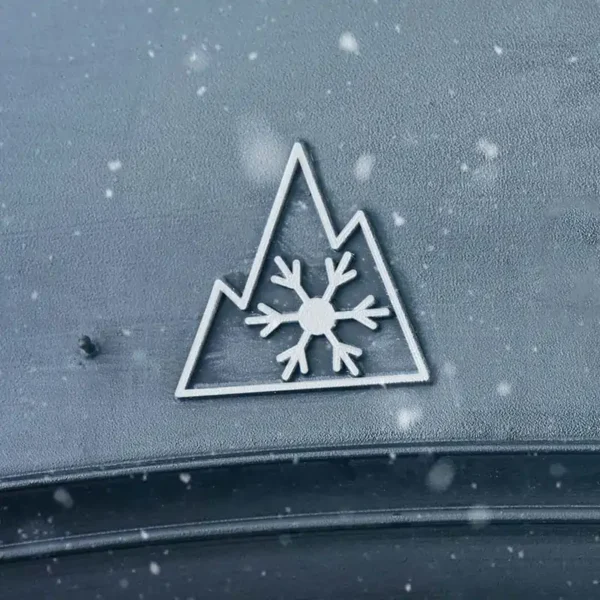All insurance companies in Ontario offer a discount of up to 5% on your auto insurance if you use winter tires from November to March. Winter tires help you brake faster and keep control of your vehicle in snow and ice. They save lives.
Winter driving conditions can vary from good, on sunny days with no precipitation, to very, very bad when the snow flies and the temperature dips. Snow and ice can make it next to impossible for your car to maintain contact with the road, and falling or blowing snow can reduce visibility to almost zero at times. Insurance companies offer a discount to drivers who take practical steps to prepare their vehicles for the winter weather.
What is a winter tire discount and how does it work?
A majority of insurance companies in Ontario offer a winter tire discount of 2 – 5%. Given that the average auto insurance premium in Ontario is now over $2,000 a year, that means you can save $40 to $100 simply by doing something that makes sense anyway.
To get the discount, you need to have your car equipped with winter tires (also called snow tires) between November 1 and April 1. All four tires need to be winter tires.
Most insurance companies will require that you provide some kind of proof of installation when you first apply for the winter tire discount. In some cases, it can be a receipt from the mechanic who installed them. In others, the insurer may ask for a picture of your car and a closeup of the tires, showing the winter tire logo.
In most cases your insurance company won’t ask to see proof every year, but you will likely have to make a declaration at the time you get the discount that your vehicle will be equipped with four winter tires during the winter season. Most insurers expect that your tires will last six years, and may ask for proof again after that period has passed.
Do all-season tires qualify for the discount?
No, they do not. The name “all-season” suggests that the tires should be used year-round, and some people do that. But all-season tires perform best in warmer temperatures, and are not nearly as effective as winter tires on snow and ice. When the temperature dips below 7° Celsius, all-season tires start to lose their grip on the road. To get the discount from insurance companies, your tires need to be actual winter tires, identified by a symbol of a three-peak mountain with a snowflake inside.

How much can you save with the winter tire discount?
Your savings really depend on how much you pay for auto insurance, which can vary from less than $1,000 a year to more than $7,000.
Given that most insurance companies offer a 5% discount, here’s how much you can save:
| Premium without discount | Premium with discount | Annual savings |
| $800 | $760 | $40 |
| $1,200 | $1,140 | $60 |
| $1,500 | $1,425 | $75 |
| $2,000 | $1,900 | $100 |
| $2,500 | $2,375 | $125 |
| $3,000 | $2,850 | $150 |
| $3,600 | $3,420 | $180 |
| $4,000 | $3,800 | $200 |
| $5,000 | $4,750 | $250 |
| $6,000 | $5,700 | $300 |
| $6,500 | $6,175 | $325 |
| $7,500 | $7,125 | $375 |
Do winter tires pay for themselves?
They don’t, but they do. A set of new winter tires costs between $600 and $2,000. And twice a year, you’ll pay $80 to $120 to have your mechanic switch them on and off. If you need somewhere to store the tires you’re not using, that’s an extra $40 to $100. So even at the bottom end, you’ll pay $600 up front plus $200 a year.
But the reality is that you don’t have to count the cost of the actual tires, because they are more or less the same price as all-seasons, and when you switch them back and forth, it extends the life of both sets of tires. So if your all-seasons would usually last six years with year-round use, you may be able to extend that to 10 years if the tires get a five-month winter break. Over the long haul, the cost of buying tires is a break-even proposition.
How much you can save on insurance depends on how much you pay. The average premium in Ontario is now over $2,000, so for most Ontarians, a 5% winter tire discount will save about $100. If you don’t need storage, your ongoing costs for winter tires could be as low as $160 a year. A difference of 60 bucks, and a small price to pay for safety.
When do you have to switch your tires?
The answer depends on whether you are going by the rules of the insurance companies or the recommendations of safety experts. Typically, your insurance company will require that you have the winter tires on the car every year from November 1 to April 1. If you want to pre-schedule your tire changes, that’s a good guide.
What tire professionals will tell you is that winter tires should ideally be put on when the outside temperature goes below 7° Celsius. According to Weatherspark, daily low temperatures in the GTA reach 7° in October, and daily highs reach 7° in November. It’s not an exact science.
In terms of when to take the snow tires off, driving on winter tires in warm weather will result in premature wear, and they won’t last as long. That said, there are always a few snowfalls in April and the average temperature is only 6°, so waiting until the middle of that month might be better.
Which insurance companies offer the winter tire discount?
Since 2016, FSRA has required all companies providing auto insurance in Ontario to offer a winter tire discount. It varies between 2 – 5%. Talk to one of our brokers about all of the different insurance discounts that are available for Ontario drivers.
Get an auto insurance quote in a few short steps.
How long do winter tires last?
Most winter tires are designed to last five or six years. But if you forget to take your winter tires off, and use them in warmer weather, they are likely to wear out faster.
Tire manufacturers recommend that you replace all four tires at the same time for maximum safety and durability. When your mechanic puts the tires back on in the fall, they will rotate them so that they will wear evenly.
What makes snow tires better for winter driving?
Winter tires are designed differently than all seasons. The three main differences are:
- Winter tires are made of a different type of rubber. When the temperature drops, all-season tires can get stiff, and that reduces traction. Snow tires stay flexible in the cold.
- Winter tire treads are deeper and have patterns that prevent snow and ice from building up. Your regular tires can lose grip when snow builds up in the treads.
- Lastly, snow tires have more biting edges. Thousands of tiny slits called sipes allow the tire to dig into snow, and especially ice. The tread on all-seasons is more basic.
But the most important thing you need to know about winter tires is that they will stop your car faster on snow and ice. According to tests done by Consumer Reports, even when driving as slowly as 16 km/h, winter tires will stop your car 16 feet shorter than all-season tires. That could easily prevent an accident, and save a life.
Get ready before you get on the road
It’s always a good idea to be prepared for the worst. Here are a few things to consider before getting on the road in winter.
- Check weather conditions beforehand, so you know what to expect.
- Check your tire pressure. Tires grip better when they are fully inflated.
- Check your wipers and fill up your wiper fluid. Fluid should be rated for -40°. Keep extra fluid in the car. The last thing you need is for your wipers to fail in a blizzard.
- Ensure that everyone has their seatbelt fastened before hitting the road.
- If other people drive the car, adjust the mirrors to where you like them.
- Program your GPS before you get on the road.
- Fill up on gas. Winter weather can lead to traffic jams. Your two-hour drive could turn into a five-hour trip or more. Don’t get stranded.
- Charge your phone. If you get into an accident or get stuck in a snow bank, you’ll want to make sure you can call for help.
- Let someone know where you’re going and when you expect to arrive.
- Pack snacks. Something that will keep. Leave them in the car. You never know.
- Wear a winter coat, mitts, a toque and boots, just in case you get stuck.
- Pack a safety kit including things like a first aid kit, shovel, snow brush, scraper, booster cables, flares, blankets, matches, flashlights, candles, and a jerry can. Don’t keep gas in the can.
Other tips for winter driving
Winter driving conditions can be treacherous, and change at a moment’s notice. Safety experts always recommend that you drive according to the conditions. In winter, that can mean snow, ice, slush, water and/or mud on the road, and snow, rain or sleet affecting visibility.
- For starters, slow down. Even if the posted speed limit is 100 km/h, if you can only see 50 feet ahead of you and there’s ice on the road, you probably shouldn’t be going 100.
- Leave lots of extra space between you and the car in front of you. Even if there’s no visible ice on the road, there could be icy patches that can affect stopping distances.
- In snowy conditions, it’s even more important that you have all your attention on the road. Turn off the radio and ask passengers to keep talking to a minimum.
- In severe weather, avoid passing, especially on one-lane roads where you need to pass in the oncoming lane. Take your time. You’ll get there.
- Consider pulling over. Especially when visibility gets bad, it sometimes makes sense to pull over and wait for conditions to improve. But don’t just pull onto the shoulder. Find a safe place where you can get right off the road.
- If you get in an accident or get stuck, don’t get out of your car. Call for help and wait.
Who sells winter tires?
In Canada, any business that sells tires is likely to sell winter tires. If you value convenience above all else, it makes sense to buy your snow tires from the car dealership or garage that you trust with your other auto service needs. Many garages offer storage so that you can keep the tires you’re not using right there. One stop shopping. This also allows you to schedule your bi-annual tire swap along with other scheduled vehicle maintenance.
If price is your main motivator, you may be able to save up to 10% by buying your winter tires online.
Get all the insurance discounts
Mitch Insurance works with more than 70 different insurers in Ontario, and our expert brokers can find the best combination of discounts for the auto insurance you need. Drive safe this winter. We’ve got you covered.
Looking for car insurance?
Speak with a Mitch Insurance broker today to get a quote on Ontario car insurance.
Call now
1-800-731-2228








If I have winter tires on my car, would I get the discount year around or just for winter months?
Thanks for the comment. The winter tire discount applies to your annual premium, which means it’s year round.